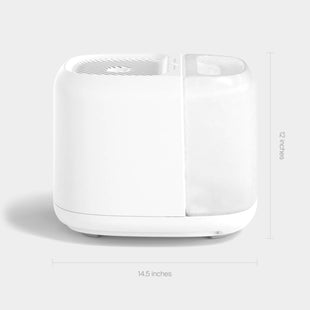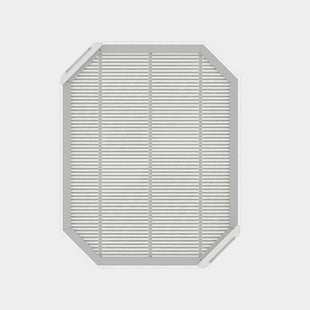Since you have been compelled to click on this article and read thus far, you clearly know that humidity is an exceptionally important environmental condition. What you may be wondering at this point is how to measure humidity, or more specifically, how to measure relative humidity.
Measuring humidity levels in your home and the surrounding environment may be as simple as investing in a hygrometer. However, there is merit in understanding the different types of humidity and optimal humidity levels for your home and work space. A firm understanding of these concepts will allow you to fully comprehend your hygrometer reading and provide you with a target humidity level from which you can adjust home humidity levels accordingly.
What is Humidity?
To refresh: what is humidity?
Humidity is best defined using imagery, as are most complex topics.
Picture this: you are lounging on a beach chair under an umbrella at a resort in the tropics (ah, paradise). After a few minutes on the beach chair, all exposed body parts including your face, your feet, and your hair, feel damp. Small beads of water have formed all over your body. You feel fatigued despite having not moved from a supine position with your exceptionally thrilling murder mystery novel. That is humidity. Or, more specifically, that is a high level of humidity.
What about lack of humidity? Imagine yourself walking your dog while on vacation in a dry, desert location. Not 100 yards from your Airbnb, you notice your eyes start to water, your nose suddenly feels congested, and you feel dehydrated beyond measure. These are the effects of low humidity.
Humidity is the presence of water vapor in the air. When the air is saturated with water vapor, humidity levels are high. When the air is devoid of moisture, the humidity levels are low.
When determining how to measure humidity, the general definition of “humidity” is too broad. The mere presence of moisture in the air means little when measuring home humidity levels without considering temperature. Let us explain.
The Types of Humidity

Humidity, as we previously mentioned, is the presence of water vapor in the air. This is humidity in a general sense. There are three potential outputs when measuring humidity: absolute humidity, relative humidity, and specific humidity. Though, we will only address absolute humidity and relative humidity in this article.
Absolute Humidity
Absolute humidity refers to the amount of water present in a designated volume of air. Absolute humidity is measured in grams of water per kilogram (kg) of dry air, which is commonly termed the “mixing ratio.”
This humidity measurement is not particularly useful when measuring humidity in your home or measuring humidity to navigate what to wear on any given day. Why? Because 50% absolute humidity on a cold day feels a lot different than 50% humidity on a warm day.
Enter: relative humidity.
Relative Humidity
Relative humidity is the measurement of water vapor in the air in relation to the maximum amount of moisture that can be suspended in the air at a certain temperature. When you see “predicted humidity” on a weather report, it is referring to relative humidity.
Here’s an analogy: you fill an 8oz glass with 4oz of water. 4oz of water would obviously be half of the total volume of liquids that an 8oz glass could hold. Now, fill a 16oz glass with 4oz of water. 4oz of water in a 16oz glass is only ¼ the volume capacity of the 16oz glass.
Great story, but how does this apply to humidity?
Imagine the 8oz glass represents cold temperature while the 16oz glass represents warm or “hot” temperature. When the cold, 8oz glass is filled with 4oz, it is at 50% capacity and the warm 16oz glass with the same volume of water is only at 25% capacity. Warm temperatures can hold higher levels of moisture than cold temperatures. 50% relative humidity levels on a cold day feel much different than 50% relative humidity on a warm day.
How to Measure Humidity
Next, we are tasked with explaining how to measure humidity or more specifically, how to measure relative humidity.
While you could manually measure humidity, as we described in our blog “What is a Hygrometer?” the most effective way to measure home humidity levels is using a digital hygrometer.
A hygrometer is a digital device that monitors the relative humidity levels in a designated space. Hygrometers can be purchased at home improvement stores, some home goods stores, and on Amazon.
There are a few best practices when operating a hygrometer that are worth mentioning:
- Choose a location in your home that does not experience dramatic temperature fluctuations.
- Avoid placing your hygrometer near vents, doors, or humidifiers for an accurate reading.
- Avoid placing your hygrometer in a kitchen or bathroom, which experience major moisture fluctuations and may provide an inaccurate reading.
- Avoid placing your hygrometer next to windows with ample natural light, which may overheat the hygrometer and provide an inaccurate reading.
What is an Optimal Humidity Level?
Optimal humidity refers to the best possible humidity level for your home to produce the maximum health benefits.
The optimal humidity range for your home or office space is 40% to 60%. Within this range, you will reap the myriad of benefits of optimal humidity, which include:
- Improved skin hydration
- Reduced signs of skin aging including fine lines, wrinkles, and Crow’s Feet
- Improved scalp hydration and overall quality of hair
- Improvement of dry, red, or irritated eyes
- Reduced congestion and runny nose
- Reduced chances of contracting an airborne virus including COVID-19
- Improved breathing in infants
- Improved skin hydration for infants
- Improved lifespan of houseplants (and improved overall appearance!)
- Improved health of wood furnishings, furniture, and foundation in your home
When relative humidity levels drop below 40% or exceed 60%, the condition of your home may become uncomfortable. Low humidity levels lead to a bevy of ailments including dry skin, nasal congestion, dry eyes, dry lips, and more. Exceedingly high humidity levels create a breeding ground for mold and bacteria, which can contaminate your home and trigger allergy or asthma symptoms.
The goal is to maintain 40% to 60% humidity levels in your home while present to reap the benefits. A hygrometer can help you to monitor home humidity levels while a humidifier or dehumidifier can help to increase or decrease humidity levels, respectively.
Canopy Humidifier

Canopy Humidifier is the only no mist humidifier with a mold-inhibiting* design inside the humidifier available on the market. Designed with proprietary SPA™ technology, Canopy Humidifier kills bacteria before it enters your space.
Canopy Humidifier is easy to clean with dishwasher safe components; just pop your Canopy parts into the dishwasher and relax with some green tea or a cappuccino. Canopy Humidifier can humidify up a room up to 400sq feet, with 36 hours of run time, and three fan speeds for pure, hydrated bliss.
*Mold inhibition limited to device interior. Does not treat air or environment. 3rd party lab-tested with Aspergillus niger (ATCC 6275, 16404).































